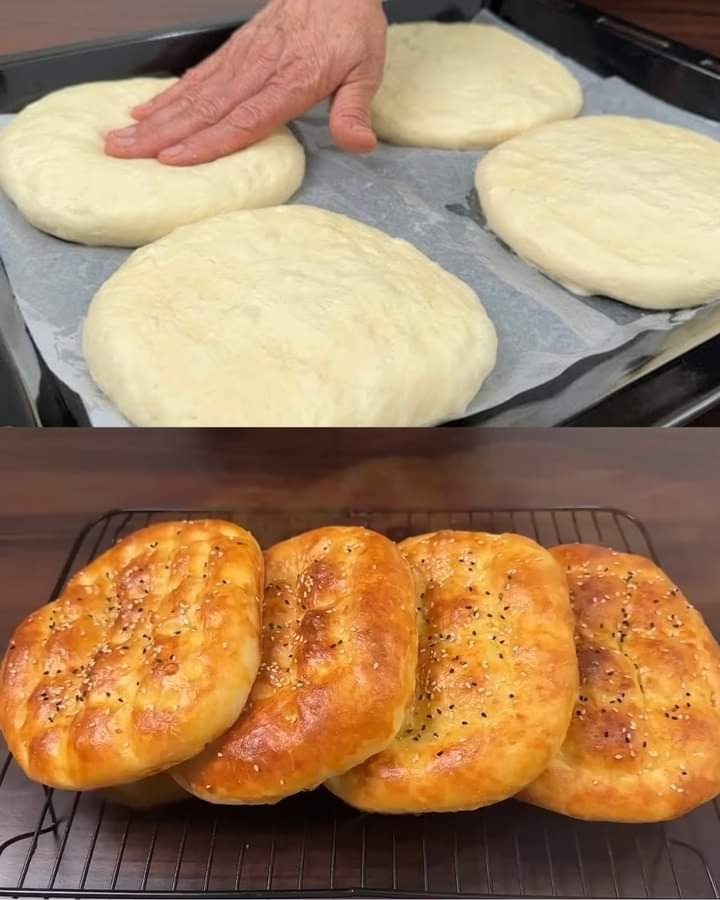Do you want something cozy, comforting, and made at home? This fast bread recipe is great for people who want to make something nice without spending a lot of time in the kitchen. With only a few basic ingredients, you can make a tasty, cheesy bread that will make everyone want more. This recipe is great for breakfast, lunch, or a snack. It’s very simple, so even new bakers can make it successfully. Let’s explore the specifics and begin making this tasty, cheesy bread that will surely amaze!
Ingredients
To Activate the Yeast:
Hot Milk: 400 milliliters
Purpose: The heat of the milk makes the yeast become active, creating the right conditions for it to ferment and grow.
Sugar: 15g
Purpose: Sugar is food for the yeast, which helps it to become active fast and work well.
Yeast: 10 grams
Purpose: The main element that helps bread to rise and become soft.
For the Bread:
Wheat flour: 480 grams
Purpose: The main part of the bread that creates the network of gluten necessary for a light and fluffy loaf.
Salt: 8g
Purpose: Improves the taste of the bread and makes the gluten stronger.
Olive Oil: 20 grams
Purpose: Adds moisture and richness to the dough, making it soft and tender.
Cheese (Mozzarella or Cheddar): 200 grams
Goal: The key element of the recipe is to include a melted, cheesy filling inside each slice of bread.
One egg yolk.
Purpose: Gives the bread a nice color and shine, making it look attractive.
Vegetable oil: To prevent sticking.
Purpose: Helps the dough not stick while it rises and bakes.
Directions
Start the Yeast.
Heat the milk: In a small pot or microwave-safe bowl, gently warm 400 ml of milk until it is between 37°C to 40°C (98°F to 104°F). The milk should feel warm, but not hot, because too much heat can destroy the yeast.
Advice: Use a thermometer to be precise, or check with your finger—if it feels warm but not too hot, it’s good.
Mix the following ingredients in a medium-sized bowl: warm milk, 15 grams of sugar, and 10 grams of dry yeast. Gently mix the ingredients until the sugar and yeast are completely dissolved.
Tip: Sugar helps the yeast become active faster.
Allow it to rest: Place a clean kitchen towel or plastic wrap over the bowl and leave it in a warm spot for approximately 10 minutes. The mixture should start to look frothy and bubbly, showing that the yeast is working and can be used.
Advice: If the mixture does not create bubbles, the yeast might be old or the milk too hot or cold. It is best to start again to achieve the desired outcome.
Make the dough.
Sift the Flour: In a big bowl, use a sifter to remove any lumps from 480 grams of wheat flour to make sure the dough is smooth and even.
Advice: Sieving flour also helps to add air to it, making the bread lighter.
Sprinkle 8 grams of salt into the flour and mix well to spread it evenly. Salt not only makes food taste better but also helps to make the gluten structure stronger.
Advice: Before adding the yeast mixture, mix the salt well with the flour to avoid slowing down the yeast’s activity.
Mix the activated yeast with the flour slowly while stirring with a wooden spoon or spatula. When you stir, a rough dough will begin to take shape.
Advice: Pour the yeast mixture slowly to prevent clumps and make sure it is smooth.
Knead the dough.
Include Olive Oil: Add 20 grams of olive oil to the dough and start mixing. Work the dough for 3-4 minutes until it is smooth, stretchy, and a little sticky.
Advice: You can mix the dough by hand on a surface with a little flour or use a stand mixer with a dough hook. If you are kneading the dough by hand, fold it in half and push it with your hand’s heel. Then, turn it and do it again.
Verify the dough: The dough should feel smooth, stretchy, and slightly sticky, but not too much that it sticks to your fingers. If the dough is too sticky, put in a bit more flour, one tablespoon at a time.
First Increase:
Grease the Bowl: Lightly coat a big bowl with vegetable oil. Put the dough in the bowl with oil, making sure it is covered on all sides. This keeps the dough moist while it rises.
Tip: The oil also helps make a soft outer layer on the bread once it’s done.
I’m sorry, but I need a text to paraphrase. Could you please provide a sentence or a paragraph for me to simplify?
Ezoic is a tool used by website owners to improve their site’s performance and user experience.
Cover the bowl with a clean kitchen towel or plastic wrap and put it in a warm, draft-free place to let it rise. Allow the dough to rest for around 30 minutes, or until it has doubled in size.
Suggestion: To make a cozy space for the dough to rise, you can warm up your oven at the lowest temperature for a short time, then switch it off and put the dough in.
Form the bread into the desired shape.
Press the dough gently after it has risen to let the air out. This helps to make the bread have a softer texture.
Advice: Be careful when pressing down the dough—just a few presses are enough.
Split the dough: Place the dough on a surface with a little flour. Use a bench scraper or knife to cut the dough into 4 equal pieces. Form each part into a round shape by folding the edges underneath and rolling it softly between your hands.
Advice: If you like smaller rolls, you can split the dough into more pieces—making 6 to 8 smaller rolls is also a good choice.
Continued on the next page
ADVERTISEMENT

